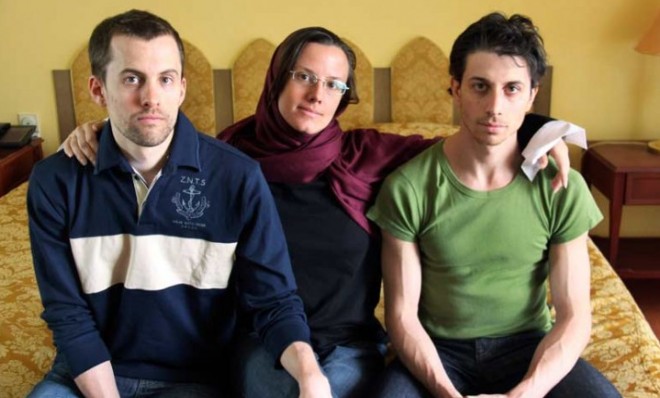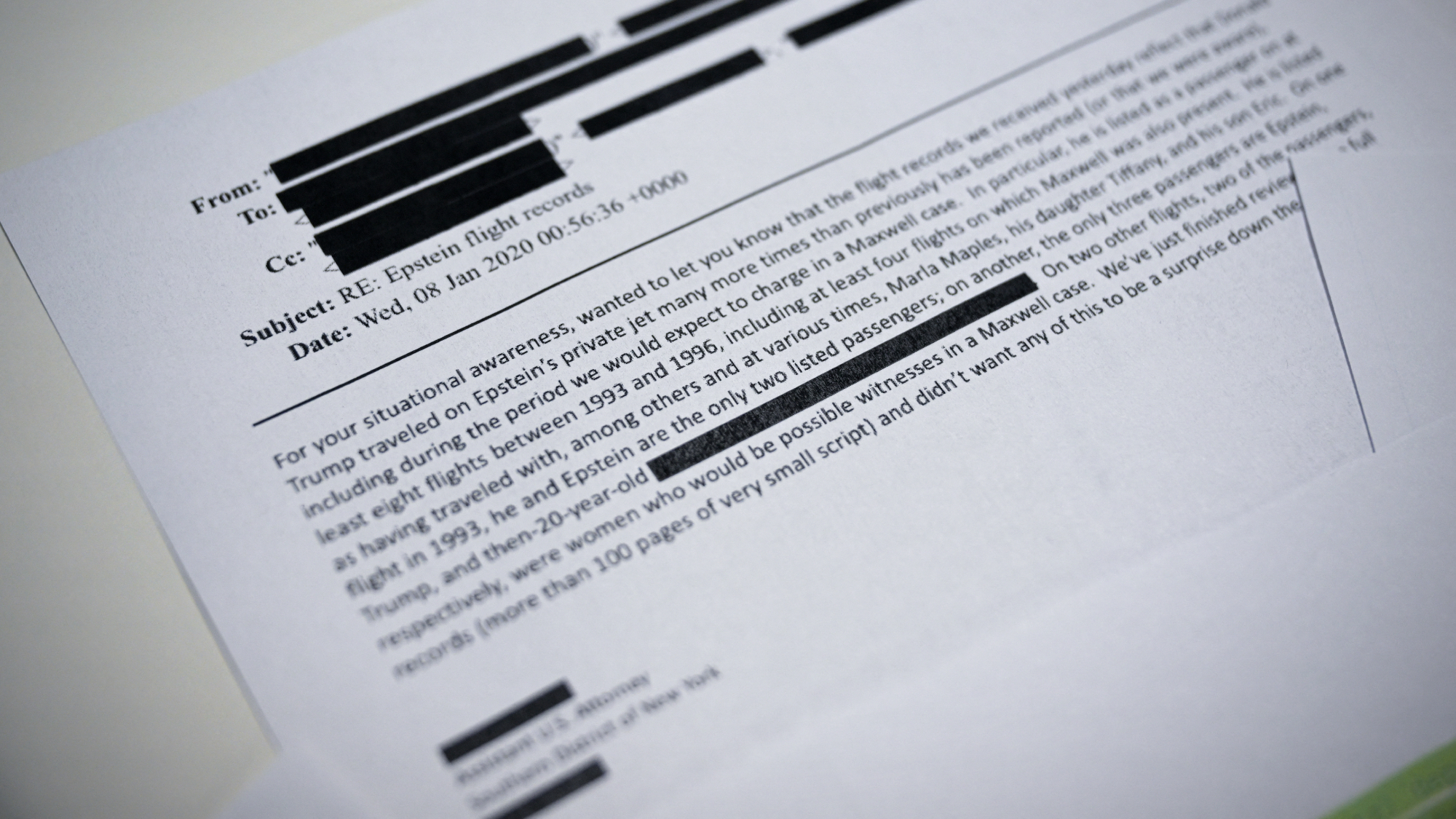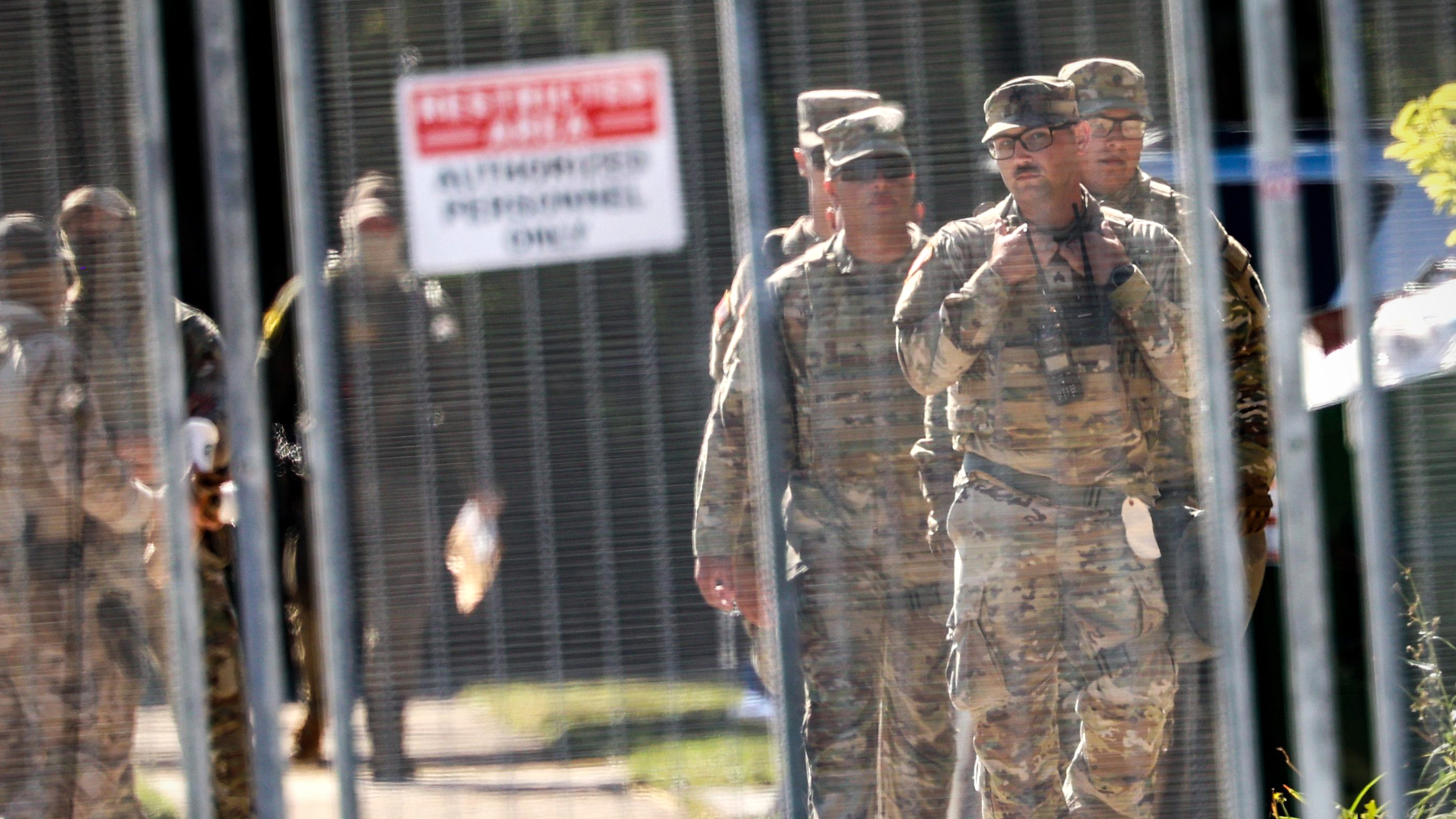Solitary confinement: The cruelest punishment
More than 80,000 people were in solitary confinement in the United States in 2005

IT'S SEVEN MONTHS since I've been inside a prison cell. Now I'm back, sort of. The experience is eerily like my dreams, where I am a prisoner in another man's cell. Like the cell I visit in my sleep, this one is built for solitary confinement. I'm taking intermittent, heaving breaths, like I can't get enough air. This still happens to me from time to time, especially in tight spaces. At a little over 11 by 7 feet, this cell is smaller than any I've ever inhabited. You can't pace in it.
"So when you're in Iran and in solitary confinement," asks Lt. Chris Acosta, my guide at California's Pelican Bay State Prison, "was it different?" His tone makes clear that he believes an Iranian prison to be a bad place.
He's right about that. After being apprehended on the Iran-Iraq border, Sarah Shourd, Josh Fattal, and I were held in Evin Prison's isolation ward for political prisoners. Sarah remained there for 13 months, Josh and I for 26 months. We were held incommunicado. We didn't go to trial for two years. When we did we had no way to speak to a lawyer and no means of contesting the charges against us, which included espionage. The alleged evidence the court held was "confidential."
The Week
Escape your echo chamber. Get the facts behind the news, plus analysis from multiple perspectives.

Sign up for The Week's Free Newsletters
From our morning news briefing to a weekly Good News Newsletter, get the best of The Week delivered directly to your inbox.
From our morning news briefing to a weekly Good News Newsletter, get the best of The Week delivered directly to your inbox.
What I want to tell Acosta is that no part of my experience — not the uncertainty of when I would be free again, not the tortured screams of other prisoners — was worse than the four months I spent in solitary confinement. What would he say if I told him I needed human contact so badly that I woke every morning hoping to be interrogated?
Of course my experience was different from that of the men at Pelican Bay. How can you compare the two, when the difference between one person's stability and another's insanity is found in tiny details? Do I point out that I had a mattress, and they have thin pieces of foam; that the concrete open-air cell I exercised in was twice the size of the "dog run" at Pelican Bay, which is about 16 by 25 feet?
"There was a window," I say. "Just having that light come in, seeing the light move across the cell, seeing what time of day it was...." Without those windows, I wouldn't have had the sound of ravens, the rare breezes, or the drops of rain that I let wash over my face some nights. When, after five weeks, my knees buckled and I fell to the ground utterly broken, sobbing and rocking to the beat of my heart, it was the patch of sunlight that brought me back.
Here, there are no windows.
A free daily email with the biggest news stories of the day – and the best features from TheWeek.com
Acosta, Pelican Bay's public information officer, is giving me a tour of the Security Housing Unit. Inmates deemed a threat to the security of any of California's 33 prisons are shipped to one of the state's five SHUs, which hold nearly 4,000 people in long-term isolation. In the Pelican Bay SHU, 94 percent of prisoners are celled alone; overcrowding has forced the prison to double up the rest. Statewide, about 32 percent of SHU cells — hardly large enough for one person — are crammed with two inmates.
Once inside a SHU, work, drug treatment programs, or religious services are not permitted. SHU prisoners are not allowed phone calls (except in approved emergencies) or contact visits. Clocks, photo albums, food condiments containing sugar, playing cards, and chessboards are all banned. They are let out to the dog run, where they exercise for an hour a day, alone. They don't leave the cell to eat. If they ever leave the pod, they have to strip naked, pass their hands through a food slot to be handcuffed, then wait for the door to open and be bellycuffed. Pelican Bay Warden Greg Lewis insists this, too, isn't to punish them, but to provide "a very safe environment."
I AM NOT permitted to speak to a prisoner in solitary, but if I could, I would meet with Dietrich Pennington, a 59-year-old Army veteran from Oakland who has served 20 years of a life sentence for robbery, kidnapping, and attempted murder. Pennington has lived alone in one of these cells for more than four years. During that time, he hasn't spoken to his family. He has never met any of his seven grandchildren. In the SHU, he's seen "some of the strongest men I know fall apart."
But the fact that Pennington is in solitary is not what is remarkable about his story. More than 80,000 people were in solitary confinement in the United States in 2005, the last time the federal government released such data. In California alone, at least 11,730 people are housed in some form of isolation. What is unique about Pennington is that he doesn't know when, or if, he will get out of the SHU. Like at least 3,808 others in California, he is serving an indeterminate sentence.
Compared with most SHU inmates, Pennington is a newbie. Prisoners spend an average of 7.5 years in the Pelican Bay SHU, the only one for which the California Department of Corrections and Rehabilitation (CDCR) has statistics. More than half of the 1,126 prisoners here have been in isolation for at least five years. Eighty-nine have been here for at least 20 years. One has been in solitary for 42 years.
Four years ago, Pennington was "validated" as an associate of a prison gang, though there is no evidence that he's ever communicated with a member of a gang. "I've never been, never want to be a part of no gang," he wrote me.
To validate an inmate as a gang member, the state requires at least three pieces of evidence, which must be "indicative of actual membership" or association with a prison gang in the previous six years. Pennington's validation as a gang "associate" relies on these three pieces of evidence: a newspaper article he kept that was written by a validated gang member; a coffee mug bearing the image of a dragon, which prison officials consider a gang symbol; and a notebook he kept in which he refers to Nat Turner, W.E.B. Du Bois, and Malcolm X. It could have included Machiavelli's The Prince, Robert Greene's The 48 Laws of Power, or Sun Tzu's The Art of War. One inmate's validation includes a Christmas card with stars drawn on it — alleged gang symbols — among Hershey's Kisses and a candy cane. "Direct links" that appear in inmates' case files are often things they have no control over, like having their names found in the cells of validated gang members or associates or having a validated gang affiliate send them a letter, even if they never received it or knew of its existence.
The decision to put a man in solitary indefinitely is made at internal hearings that last, prisoners say, about 20 minutes. They are closed-door affairs. CDCR told me I couldn't witness one. No one can. In California, an inmate facing the worst punishment our penal system has to offer short of death can't even have a lawyer in the room. He can't gather or present evidence in his defense. He can't call witnesses. Much of the evidence — anything provided by informants — is confidential and thus impossible to refute.
None of the gang-validation proceedings, from the initial investigation to the final sentencing, have any judicial oversight. "That is a system that has no place in a constitutional democracy," says David Fathi, director of the American Civil Liberties Union's National Prison Project. He says California's policy is "a form of guilt by association that is completely foreign to our legal system. Prison administrators have absolute power, and that is a recipe for abuse and violation of rights."
HOW DOES SOMEONE get out of the SHU, then? Officially, there are two ways. One is to be declared an "inactive" gang member or associate, which doesn't happen very often. The other way out is to debrief — to divulge everything an inmate knows about a gang, which a prisoner can do at any time. An average of 108 do it every year, even though among prisoners snitching can carry the death penalty.
Is long-term SHU confinement torture? The ACLU says yes. Physicians for Human Rights agrees. The Center for Human Rights and Constitutional Law and several other prisoner rights groups recently filed a petition with the United Nations claiming just that. Human Rights Watch says that, at the very least, it constitutes cruel, inhuman, and degrading treatment, which is prohibited by international law. But CDCR, like correctional departments around the country, does not consider the SHU solitary confinement. Inmates have TV, and they have contact with staff when they bring them their food, officials told me. Our interrogators in Iran said the same thing.
One night, I stare at the pile of letters on my desk written by prisoners in solitary. I can't let it keep growing, so I take it over to the couch and read through them all. It's painful. A part of me relates to these people, but, as I wanted to tell Lt. Acosta when I stood in that cell, there are such huge differences too. They are criminals; I was a hostage. They are spending many years in solitary; I did four months.
But still, I can't escape the fact that their desperate words sound like the ones that ricocheted through my own head when I was inside. I go to the big wicker chest at the foot of my bed. In it are letters written to me by friends, family, and strangers that I never received because the Iranian censors would only let in mail from immediate family. There are hundreds of these; I keep them because I think I might read them some day. But not now. Instead, I grab a little piece of paper that is covered in microscopic writing, the script so small and the shorthand so esoteric that I can hardly read it, even though it was written by my own hand. It is the only piece of my prison journal — written on scraps of paper and hidden in the spines of books — that made it out.
The more one is utterly alone, the more the mind comes to reflect the cell; it becomes blank static....
Solitary confinement is not some sort of cathartic horror of blazing nerves and searing skin and heads smashing blindly into walls and screaming. Those moments come, but they are not the essence of solitary. They are events that penetrate the essence. They are stones tossed into an abyss. They are not the abyss itself....
Solitary confinement is a living death. Death because it is the removal of nearly everything that characterizes humanness, living because within it you are still you. The lights don't turn out as in real death. Time isn't erased as in sleep.
I carefully fold up the note, put it back in the chest, and step out onto our little second-story porch, into the breeze and the sun.
From an article in Mother Jones. ©2012 Foundation for National Progress, reprinted with permission.


